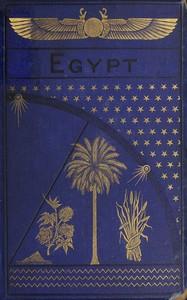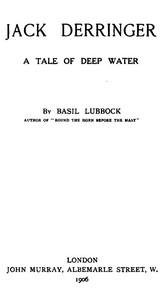Read this ebook for free! No credit card needed, absolutely nothing to pay.
Words: 167609 in 32 pages
This is an ebook sharing website. You can read the uploaded ebooks for free here. No credit cards needed, nothing to pay. If you want to own a digital copy of the ebook, or want to read offline with your favorite ebook-reader, then you can choose to buy and download the ebook.


: Egypt of the Pharaohs and of the Khedivé by Zincke F Barham Foster Barham - Egypt Description and travel; Egypt History
XL. ORIENTAL CLEANLINESS 365
L. ANIMAL LIFE IN EGYPT.--THE CAMEL 417
EGYPT OF THE PHARAOHS, AND OF THE KHEDIV?.
EGYPT AND THE NILE.
Quodque fuit campus, vallem decursus aquarum Fecit.--OVID.
The history of the land of Egypt takes precedence, at all events chronologically, of that of its people.
The Nile, unlike any other river on our globe, for more than the last thousand miles of its course, the whole of which is through sandy wastes--the valley of Egypt being, in fact, only the river channel--is not joined by a single affluent. Nor, in this long reach through the desert, does it receive any considerable accessions from storm-water. From the beginning of its history--that is to say, for more than five thousand years, for so far back extend the contemporary records of its monuments--Egypt has been wondering, and, from the dawn of intelligent inquiry in Europe, all who heard of Egypt and of the Nile have been desiring to know what, and where, were the hidden sources of the strange and mighty river, which alone had made Egypt a country, and rendered it habitable.
Nowhere, in modern times, has so much interest been felt about this earliest, and latest, problem of physical geography as in England; and no people have contributed so much to its solution as Englishmen. At this moment the whole of the civilised world is concerned at the uncertainty which involves the fate of one of our countrymen, the greatest on the long roll of our African explorers, who has, now for some years, been lost to sight in the perplexing interior of this fantastic continent, while engaged in the investigation of its great and well-kept secret; but who, we are all hoping, may soon be restored to us, bringing with him, as the fruit of his long and difficult enterprise, its final and complete solution. Thoughts of this kind do not stand only at the threshold of a tour in Egypt, as it were, inviting one to undertake it, but accompany one throughout it, deepening the varied interest there is so much everywhere in Egyptian objects to awaken.
One of the first questions to force itself on the attention of the traveller in Egypt is--How was the valley he is passing through formed?
This is a question that cannot be avoided. It was put to Herodotus, more than two thousand years ago, by the peculiarities of the scene. He answered it after his fashion, which was that of his time. It was, he said, originally an arm of the sea, corresponding to the Arabian Gulf, the Red Sea; and had been filled up with the mud of the Nile. Those were days when, as was done for many a day afterwards, the answers to physical questions were sought in metaphysical ideas. The one to which the simple-minded, incomparable, old Chronicler had recourse on this occasion was that of a supposed symmetrical fitness in nature. There is the Red Sea, a long narrow gulf, a very marked figure in the geography of the world, trending in from the south, on the east side of the Arabian Hills. There ought therefore to be on the west side of this range a corresponding gulf trending in from the north: otherwise the Arabian Gulf would be unbalanced. That compensatory gulf had been where Egypt now is. The demonstration was complete. Egypt must have been an arm of the sea, which had been gradually expelled by the deposit from the river. This argument, however, is not unassailable, even from the fitness-of-things point of view. Had the fitness-of-things been in this matter, and in this fashion, a real agent in nature, it should have made the valley of Egypt somewhat more like the Red Sea in width; and it should also have interdicted its being filled up with mud. It should have had the same reasons and power for maintaining it, which it had originally for making it. In this way, however, did men when they first began to look upon the marvels of Nature with inquiring interest, suppose that metaphysical conceptions, creatures of the brain, were entities in Nature, and would supply the keys that were to unlock her secrets.
'Egypt is the gift of the Nile.' But I believe that it is the gift of the Nile in a much larger sense than Herodotus had in his mind when he wrote these words. It is the gift of the Nile in a double sense. The Nile both cut out the valley, and also filled it up with alluvium. The valley filled with alluvium is Egypt. The excavation of the valley was the greater part of the work. That it was formed in this way was suggested to me by its resemblance to the valley of the Platte above Julesburg, as it may be seen even from a car of the Pacific Railway. You there have a wide valley, like Egypt, perfectly flat, bounded on either side by limestone bluffs, sometimes inclined at so precipitous an angle that nothing can grow upon them, excepting, here and there, a conifer or two; and sometimes at so obtuse an angle that the slopes are covered with grass. These varying inclinations reproduce themselves in the bounding ranges of the valley of Egypt. The Platte writhes, like a snake, from side to side of its flat valley, cutting away in one place the alluvium, all of which it had itself deposited, and transporting it to another. It is continually silting up its channel, first in one place, and then in another, with bars and banks, which oblige the stream to find itself a new channel to the right or left. The bluffs, though now generally at a considerable distance from the river, must have been formed by it, when it was working sometimes against one, and sometimes against the other side of the valley; and sometimes also for long periods leaving both, and running in a midway channel. Why should not the Nile have done the same?
This supposition is supported by the fact that when you have a soft cretaceous limestone, and rocks that may be easily worn away, the valley of Egypt is wide. When, as you ascend the stream, you pass at Silsil?h into the region of compact siliceous sandstone, the valley immediately narrows. And when you enter the granite region at Assouan, there ceases to be any valley at all. The river has not been able, in all the ages of its existence, to do more than cut itself an insufficient channel in this intractable rock. All this is just what you would expect on the supposition that it was the river that had cut out the valley.
Free books android app tbrJar TBR JAR Read Free books online gutenberg
More posts by @FreeBooks









